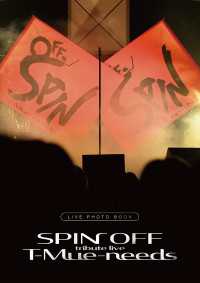Full Description
Learn how to disrupt the reproduction of white supremacy in curriculum and instruction. This volume directly confronts persistent iterations of whiteness in English education through advancing antiracist dispositions and practices. Readers will find a variety of practical implementations of teaching and learning in English Language Arts, English literacy, and English as a Second Language. Chapter authors are educators who describe various teaching projects located in K-12 and teacher education contexts. Each chapter includes a dialogic reaction by an acclaimed and experienced scholar to further extend thought around complex themes. Reckoning With the Whiteness of English Education encourages a more pedagogical view of how to engage teacher and student thought, feeling, and action in ways that combat white supremacy in English education across schools and society.
Book Features:
Illustrates how and why whiteness enables racism and argues that racism harms both students of color and white students.
Describes teaching projects from K-12 and teacher education classrooms that include dialogical exchanges with racially and intellectually diverse scholars.
Addresses a range of topics, including using children's books and young adult literature, teaching emergent multilingual students, developing curriculum, and preparing teachers.
Provokes readers to imagine nuanced teaching and learning that invites students into antiracist values and dispositions that resist white supremacy.
Contents
Introduction—Pauli Badenhorst, Samuel Jaye Tanner, and Justine Grinage
Section 1:
Teachers Reckoning with the Whiteness of English Education
Reopening Racial Wounds: Whiteness, Affect, and Race Dialogues in the English Classroom—Justin Grinage
Engaging Awareness of Race and Racism in Early-Career ELA Teaching: Interview with a High School Teacher—Adison Godfrey and Pauli Badenhorst
There is Sickness in the Soul: Considering Soul-Centered Questions While Reckoning With Whiteness in ELA Education (Commentary)—Jeanine Staples
Section 2:
Students Reckoning with the Whiteness of English Education
An Opportunity to Be Better: Whiteness Pedagogies in English Education—SamuelJayeTanner
A Voice from an Inner Room: Using Personal Narrative Writing to Strengthen the Racial Competency of White Students—Paul F. Walsh
The Power of Writing in a Critical Examination of Whiteness (Commentary)—Jill Ewing Flynn
Section 3:
The Nuances of Reckoning with the Whiteness of English Education
Middle Grades English Language Arts, New South Classrooms, and The Prism of White Femininity—Erin T. Miller, Laurie Dymes, and Spencer Salas
"Cool it for a bit": Navigating Antiracism in One Rural Context—Kelsey R. Jones-Greer
Reproduction and Contestation of White Habitus Among ELL Teachers—JennaMin Shim, Chelsea Escalante, Cynthia Helen Brock, and Cecelia J. Aragon
Reading Whiteness with a Little Help from Bakhtin (Commentary)
Timothy J. Lensmire
Section 4:
Writing and Discussion in Reckoning with the Whiteness of English Education
Characterizing Whiteness: Using Critical Whiteness Pedagogies to Teach BIPOC YA Literature—Erin Stutelberg and Heidi J. Jones
The Slippery Spaciousness of Whiteness: Critical Creative Writing Pedagogy in Teacher Education—Elise Toedt and Anna Schick
Resisting Whiteness While Facilitating Discussions in Student Seminars—Abby Rombalski
The Necessity of a Suspect Mindset: Interrupting Whiteness Through Literature Study, Creative Writing, and Whole Group Talk (Commentary)—Carlin Borscheim-Black and Sophia Tatiana Sarigianides
About the Editors and Authors







